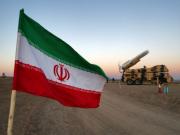
When world powers like the United States and Russia are busy developing hypersonic glide vehicles (HGV) equipped with missiles, China has moved a step ahead and reportedly conducted two 'ballistic missiles with a hypersonic glide vehicle' tests in November. The news is unveiled by 'The Diplomat', which said China has conducted two tests of their new missile known as DF-17.
The report said that the first test was conducted on November 1, followed by a second test on November 15. The November 1 test flight took place at the Jiuquan Space Launcher Center in Inner Mongolia. During the test, the missile payload with the HGV flew to a range of approximately 1,400 kilometers successfully completing its ballistic and re-entry phases.
Hypersonic glide vehicles begin their flight after separating from their ballistic missile boosters which will give the payload sufficient altitude during the course. According to the report published in 'The Diplomat', the new DF-17 system is a medium-range system, and it is capable of traveling a distance ranging from 1,800 to 2,500 kilometers. The DF-17 is designed to carry both nuclear warheads and conventional payloads.
"The missile is explicitly designed for operational HGV implementation and not as a test bed. This is the first HGV test in the world using a system intended to be fielded operationally," an anonymous US intelligence source told The Diplomat.
The United States Intelligence believes that the missile will be operational by 2020. They also consider Hypersonic glide vehicles delivered by ballistic missile boosters as a serious threat to current missile defense systems.
Even though HGV is a concept which is more than half a century old, things are becoming practical now. "Although hypersonic glide vehicles and missiles flying non-ballistic trajectories were first proposed as far back as World War II, technological advances are only now making these systems practicable," said Vice Admiral James Syring, director of the U.S. Missile Defense Agency on last July.









